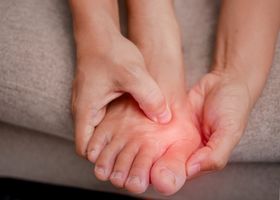Upstep Answers
Our team answers your questions about the causes and treatment of various podiatric conditions, including plantar fasciitis, flat feet, foot pain, and the use of custom orthotics.
Recent Answers
How to Stop Your Inner Ankle From Hurting When Running
Did you notice sudden pain in your ankle while running? Here's what you can do to relieve it.
Asked 7 months ago
High Arches & Overpronation: Can You Have Both at the Same Time?
Navigate the challenges of high arches and overpronation, and discover how to find the perfect solution for your unique needs
Asked 8 months ago
Can You Use FSA or HSA to Buy Custom Orthotics?
If you are interested in buying custom orthotics but are concerned about the cost, it's a little-known fact that you can purchase a pair from Upstep with your FSA and HSA dollars before they expire. W
Asked 8 months ago
How Do You Perform Eccentric Heel Raises Correctly?
If you like to run or take long walks, an eccentric heel raise is a good exercise to incorporate into your home program. Not only does it strengthen the calf muscles, but it also helps prevent Achille
Asked 8 months ago
Golfer's Knee: How to Prevent and Treat Injuries
While golf may seem like a relatively low-risk sport, there is actually a lot that can go wrong. Golf may look like a low-impact sport, but the sheer force that goes into the swing can easily cause in
Asked 8 months ago
Related Articles

Baxter’s Nerve Entrapment: Symptoms, Causes and Treatment
Babafemi Adebajo
December 19, 2024

Heel Pain When Stretching: Causes and Treatments
Janik Sundstrom
December 20, 2024

Cuboid Syndrome Sufferers: How Orthotics Can Help Your Feet
Janik Sundstrom
January 25, 2024

5 Ways Working From Home Hurts Your Feet & How to Prevent It
Janik Sundstrom
March 24, 2025

How Your Feet Issues Can Cause Back Pain
Janik Sundstrom
April 21, 2025
Recent Posts
Babafemi Adebajo
Treatment of Plantar Fibroma: Exercises, Insoles, and More
Dr. Leah Alexander
What Causes Pigeon Toe and How You Can Correct It
Upstep Staff
7 Best Exercises for Overpronated Feet
Janik Sundstrom



